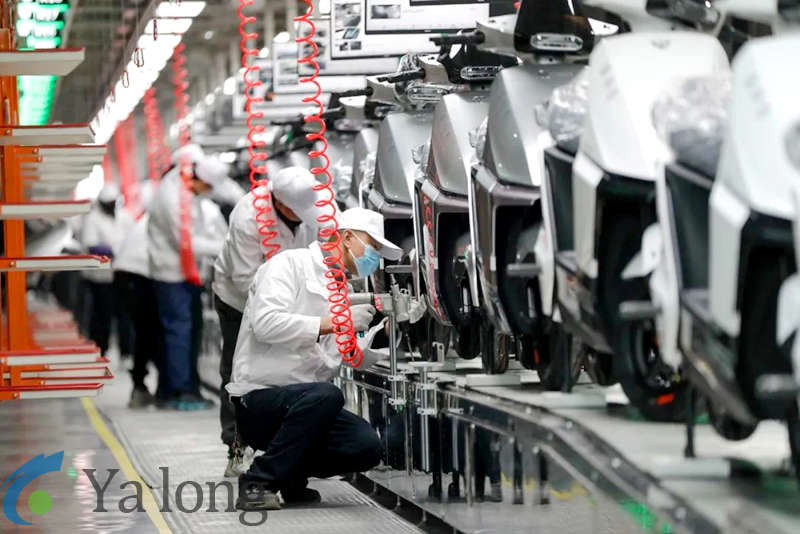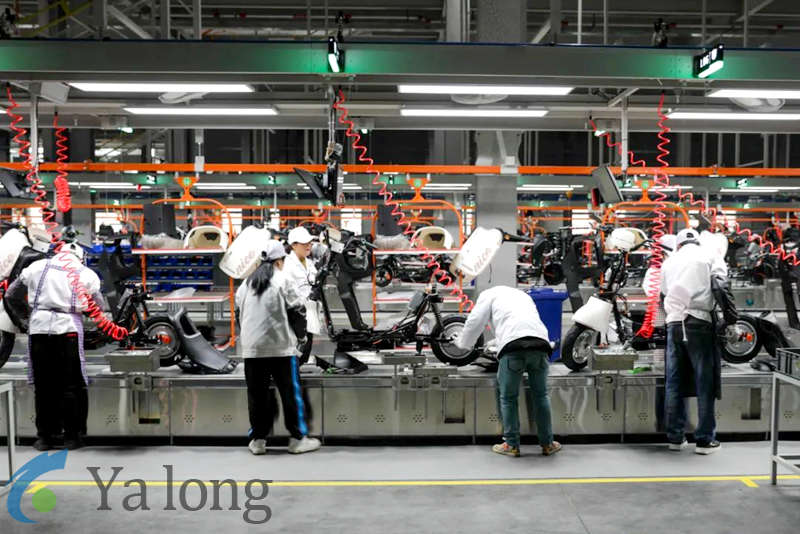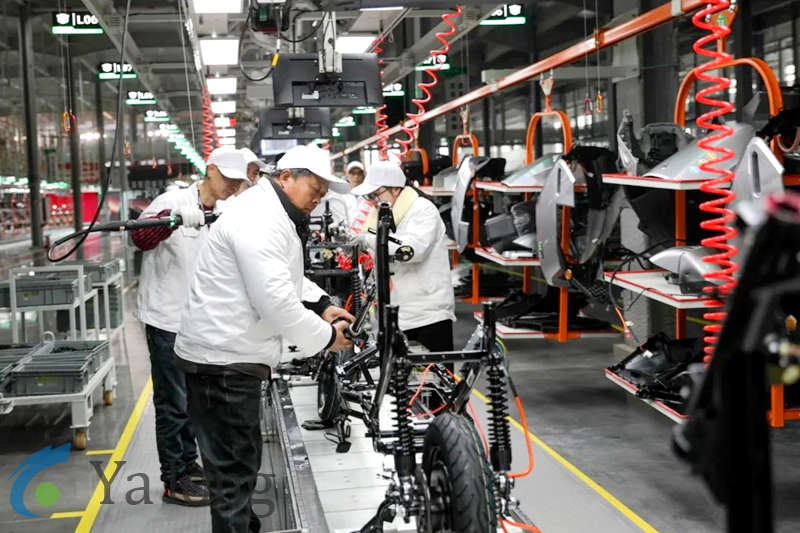I. Electric bicycle(E-BIKE) assembly line conveying system
1. Double-speed chain transmission line: It adopts high-strength alloy chains with strong load capacity and can stably carry the entire electric bicycle and components, achieving precise rhythm transportation, such as the frame and vehicle assembly process, adapting to the pace of mass production. The chain speed is accurately controllable and flexibly adjusted from 0.5 - 3 meters/minute to meet the operating time requirements of different stations and ensure the orderly connection of the assembly process.
2. Hanging conveying line: With the help of special lifting tools, conveying handles, seats and other parts can be suspended in the air, making full use of the vertical space of the workshop and making material distribution more convenient. With the intelligent positioning system, the spreader can accurately dock at the corresponding workstation with an error of less than ±5mm, improving the timeliness of component supply and helping the assembly process operate efficiently.
II. The core production process of the E-BIKE(electric bicycle) assembly line (final assembly stage)
1. Frame pretreatment and core component installation: frame on-line (robotic arm handling), install front forks and handlebar risers. Power system integration-Install the motor (rear axle), controller, battery pack, and connect the high-voltage wiring harness (insulation testing required).
2. Installation of control and safety components: Install control systems such as handlebar components (turning handles, brake handles, instrument panels), lamps (headlights, turn signals), and horns, and simultaneously complete the routing of brake cables and throttle wiring harnesses. Pre-install tires, install brake systems (disc brakes/drum brakes), and shock absorbers to ensure that hub bearings are lubricated in place.
3. Installation of seat and cover parts: Fix the seat bracket, install the seat cushion and battery latch. Covering parts (mudguards, rear hangers, reflectors) are fixed by snaps or screws, and some models use robot-assisted gluing.
4. Electrical system and functional testing: instrument panel calibration (speed, power display), key start test, check light, steering, brake power-off functions.
5. Final assembly and off-line production: Install pedals and license plate holders, paste 3C certification logos and instructions, scan the code and enter the vehicle unique identification code (VIN code), and generate production files.





